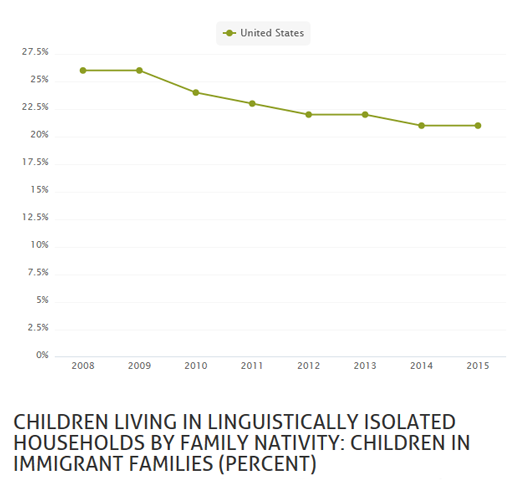Linguistic Isolation Still a Challenge for Some Kids in Immigrant Families

In America today, 90% of the 18 million children living in immigrant families were born in the United States. Fourteen percent of all kids in immigrant families have a hard time speaking English, 21% live in linguistically isolated households, and 54% live with parents who have difficulty speaking English.
By definition: Linguistically isolated households have zero individuals age 14 or older who speak only English or who speak English very well.
Nationally, the rate of linguistic isolation among children in immigrant families has dropped—from 26% in 2008 to 21% in 2015. At the state level, the rate of linguistic isolation experienced by these children varies: It is most likely in Louisiana (32%) and least likely in Montana (3%).
Learning English — and becoming proficient in it — can be a game-changer for immigrant families. Parents and youth who can converse in English are better equipped to access health care, secure employment and engage with their community. For these reasons, it is important that immigrant families receive services that both meet their basic needs and promote English proficiency.
Explore more demographic data — at the state and national level — in the KIDS COUNT Data Center.
- Children in immigrant families who are U.S. citizens
- Children living in linguistically isolated households by family nativity
- Children who have difficulty speaking English by family nativity
- Children in immigrant families in which resident parents have difficulty speaking English
- Children in immigrant families in which resident parents have been in the country five years or less
- Children in immigrant families by parent’s region of origin
- Children in immigrant families in which resident parents are not U.S. citizens







